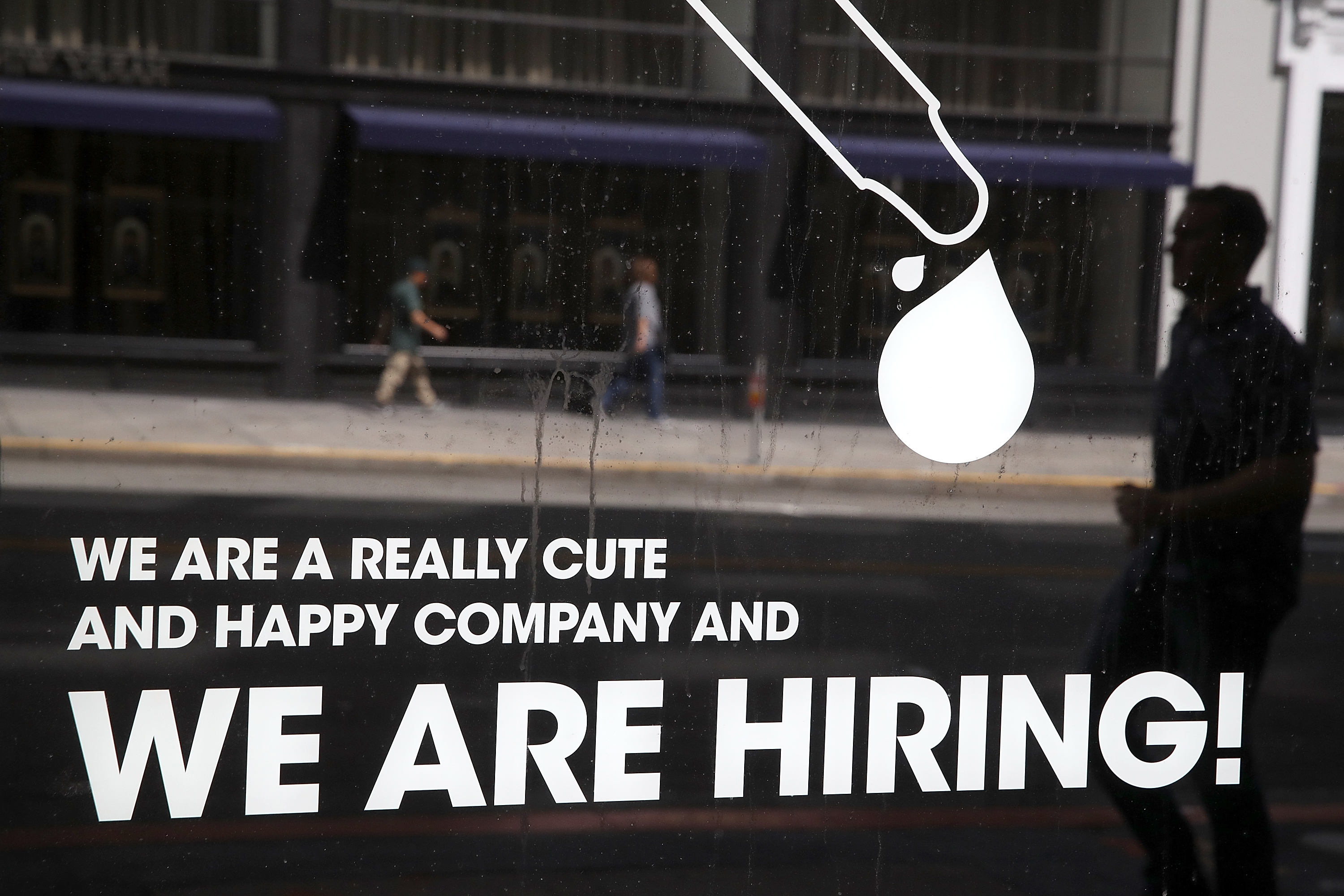US job creation slows as employers scrounge for labor
US job creation has averaged 224,000 over the past three months, stronger than in 2017, and the unemployment rate fell back to 3.9% (JUSTIN SULLIVAN)
Washington (AFP) – The US economy continued to create jobs in July but at a slower pace, while the tighter labor markets drove the unemployment rate back to near-record lows, the government reported Friday.
The somewhat disappointing result for the month obscures the very strong pace over the last three months, even as employers nationwide continue to complain about difficulty finding workers to fill open positions.
The additional signs of strength in the job market could add to concerns the Federal Reserve would move to raise the key lending rate more aggressively, however, the report also shows wage gains were “pathetic,” according to one economist.
Employers added 157,000 net new positions last month, with slower gains in auto manufacturing, transportation and mining, while the jobless rate fell a tenth to 3.9 percent, according to the closely-watched monthly Labor Department report.
Economists had been expecting a far-stronger result of 190,000 new hires, but the July number looked smaller after strong upward revisions to gains in May and June.
And analysts said the latest data could understate the strength of the labor market.
The broadest measure of unemployment — including all workers forced into part-time jobs and those who have become discouraged in their search — fell three tenths to 7.5 percent, its lowest level since May 2001.
Job gains were seen in the durable goods manufacturing and health care sectors as well as in restaurants and bars. But sporting goods, hobby, toy and game stores fell 32,000 — reflecting the closure in late June of all remaining US stores in the Toys R Us chain.
A collective upward revision of 59,000 for May and June brought the three-month average for job creation to 224,000, faster than the growth pace seen last year.
Wages meanwhile rose 0.3 percent for the month to an average of $27.05 an hour, putting them up 2.7 percent higher than July of last year — still below 2.8 percent annual inflation rate.
– ‘Pathetic’ wage gains –
“That is pathetic,” economist Joel Naroff wrote in a client note. “The soft July vehicle sales number may be a trend as consumers are becoming tapped out. That does not bode well for future spending.”
Another month of sluggish wage gains could help cool fears the economy could be overheating but are unlikely to dissuade the Federal Reserve from raising interest rates next month for the third time this year.
Still, with unemployment at historically low levels and after a decade of steady job creation, employers across the United States complain of a widespread shortage of qualified labor and say they are struggling to fill open positions and being forced to offer higher compensation to attract and retain talent.
The July decline in the unemployment rate lowered the jobless population by 284,000 to 6.3 million — with gains concentrated among adult men. The unemployment rate had ticked up in June as the healthy jobs market attracted more workers back into the labor force.
Among the unemployed, the number of people looking for work after losing or quitting their jobs fell by nearly 290,000 to 1.8 million.
Employment also fell marginally in logging and mining, a sector that includes the oil industry, as well as in financial services, leisure and hospitality and in government.
Diane Swonk, chief economist at Grant Thornton, said that amid disappointing growth in wages, President Donald Trump’s trade wars threatened to eat even further into workers’ pay by pushing up inflation.
“Price hikes tied to tariffs are likely to exacerbate that dynamic in the third quarter, which will leave the Federal Reserve raising rates without the wage gains that usually accompany inflation,” she said.
Disclaimer: This story has not been edited by Siliconeer and is published from a syndicated feed. Siliconeer does not assume any liability for the above story. Validity of the above story is for 7 Days from original date of publishing. Content copyright AFP.


